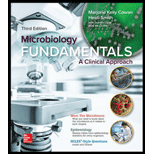
Concept explainers
Allergy and atopy might have evolved in human populations that have had a “sudden” decrease in
- a. vaccinations.
- b. exposure to vitamin D.
- c. exposure to helminth infections.
- d. intake of processed sugar.
Introduction:
Allergy is type of hypersensitivity condition of the immune system generally in response to harmless substances present in the environment. These substances are termed as allergens. Allergic diseases include atopic dermatitis, food allergies, hay fever, and so many.
Answer to Problem 1Q
Correct answer:
Atopy and allergy might have evolved in human populations that have had a sudden decrease in exposure to helminth infections.
Therefore, option (c) is correct.
Option (c) is given as “exposure to helminth infections”.
Explanation of Solution
Justify reasons for the correct statement:
Atopy refers to chronic local allergies. Atopy and allergy evolved in human populations that had a sudden reduction in exposure to helminth infections. This is because the components that produce allergic response were known to defend against helminths and other human parasites.
Hence, option (b) is correct.
Justify reasons for the incorrect statements:
Option (a) is given as “vaccinations”.
Vaccinations were never given in huge amounts. It is not possible that a sudden reduction in vaccination might induce atopy and allergy. Hence, it is a wrong answer.
Option (c) is given as “exposure to vitamin D”.
Reduction in vitamin D is not associated with the development of allergies and atopy. Hence, it is a wrong answer.
Option (d) is given as “intake of processed sugar”.
Reduction in the intake of processed sugar did not induce atopy and allergy in human populations. Hence, it is a wrong answer.
Hence, options (a), (c), and (d) are incorrect.
Allergy and atopy evolved in human populations that have had a sudden reduction in exposure to helminth infections.
Want to see more full solutions like this?
Chapter 14 Solutions
Microbiology Fundamentals: A Clinical Approach
- Consider that the Herd Immunity Threshold is dependent on the reproduction number for an infectious disease. The combination of herd immunity and quarantines were highly effective for eradicating smallpox. What is different about the symptoms of polio infection that makes quarantining infected individuals much more difficult?arrow_forwardVaccination : "is an ounce of prevention worth a pound of cure?" what points can validate this topic in support of vaccinationarrow_forwardIn young children with a fever, is ibuprofen better than paracetamol at reducing the fever? make recommendations for future research.arrow_forward
- If an animal could not produce Peyer's patches, how would that affect the animal? Increased chance of skin infections. Increased chance of sexually transmitted infections. Increased chance of intestinal infection. A decrease in the number of B cells.arrow_forwardShould vaccination be compulsory for every citizen in a country? For example Philippinesarrow_forwardDid the researchers in the Tuskegee Syphilis Experiment study successfully get informed consent from the prisoners, soldiers and mental patients that were part of the experiment? Do you side with the patients or the researchers? Why?arrow_forward
- Which of the following imaginary pieces of information does not represent a proportion or a %? a. 80 out of 100 residents of a city own a car b. One-thirds of a class session will be utilized for group exercises c. 70% of students in a university are undergraduates d. For every 100 vaccinated kids in a city, there are at least five who are not vaccinatedarrow_forwardWhich of the following statements is a good, scientific hypothesis A. If you eat a turnip every week, it will boost your immune systems. B. Consistent intake of raw turnips boosts the human immune system due to the vitamins present in uncooked turnips. C. Frozen turnips do not boost your immune system too much. D. If you eat a cooked turnip today, it will not boost your immune systemarrow_forwardTrue adaptive immunity, involving the production of a largenumber of diverse antigen receptors, first evolved ina. amphibians. c. jawed vertebrates.b. invertebrates. d. mammals.arrow_forward
- Why is immunization after being bitten by a rabid animal so effective?arrow_forwardJoseph Lister was famous for: A) identifying bacteria that cause disease B) antibiotics C) procedures to sterilize surgical equipment D) none of the above Which of the following is not part of the human immune response? A) producing antibodies B) the skin acting as a physical barrier C) the lymphatic system D) the production of antibioticsarrow_forwardIn the text, the author describes the benefits of receiving vaccines. Are there disadvantages? Why do you think some people might choose not to get vaccinated?arrow_forward
 Concepts of BiologyBiologyISBN:9781938168116Author:Samantha Fowler, Rebecca Roush, James WisePublisher:OpenStax College
Concepts of BiologyBiologyISBN:9781938168116Author:Samantha Fowler, Rebecca Roush, James WisePublisher:OpenStax College

